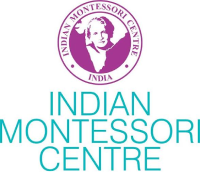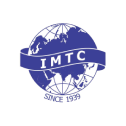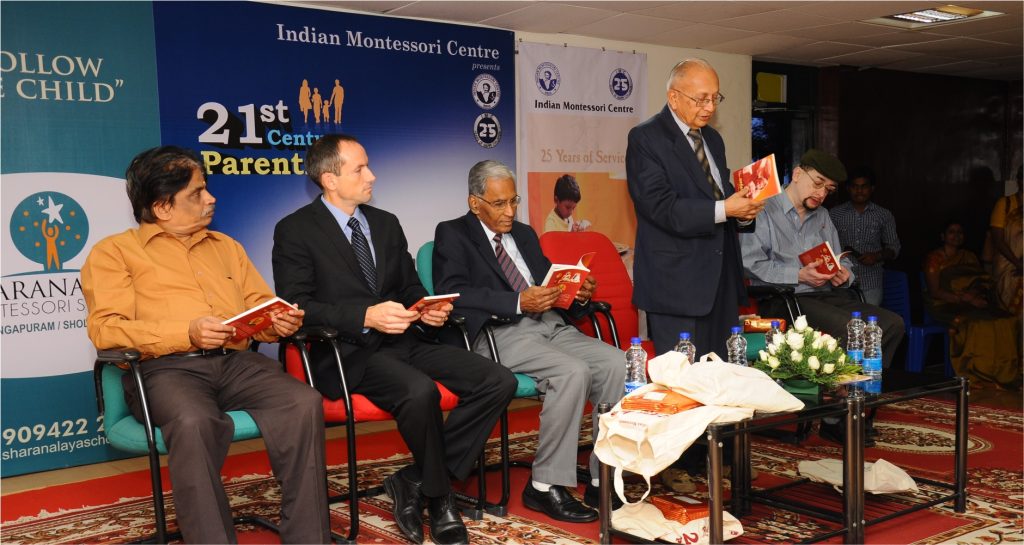The centenary years of Mahatma Gandhi, whose 100th birth anniversary will fall on the second October and of Maria Montessori, whose 100th birthday we are celebrating are overlapping. They are commemorated all over the world, special postage stamps are being issued, study seminars are being held. Mankind is one in honouring two great personalities who have left their hope-giving imprint on our century.
More than being merely a historical curiosity, this coincidence should help us recognize the kinship between the lives and spirits of Mahatma Gandhi and Maria Montessori. Both appealed for a rehabilitation of the supremacy of the spirit of man over the blind forces he now holds in his hands. Both implored that man, the near master of almost super human powers, should use them for the common weal. Man needed to make them serve the unity among all men. This unity is becoming increasingly more real in the outer spheres of material and organizational life. It is sad that it is so dangerously lacking within the hearts of men. Both were apostles of peace, passionate champions of the equality in dignity of all men and all human activity. Both are shining examples of unconditional and unreserved dedication of their whole selves to the noblest of all causes the development of the human being, of Man, the individual and of Man, the member and builder of society.
They met coming from very distant places and cultures. They truly met not only in spirit, but in person as well. During the Round Table conference in London where Gandhiji represented India, Dr. Maria Montessori was holding one of the International Training Courses. Common friends brought them together. Thereafter they never lost touch. It was this first meeting that inspired Mahatma Gandhi to visit Montessori schools in Rome on his way back. He declared there his interest in promoting them in India. Just after the outbreak of the Second World War in 1939 when Dr. Maria Montessori came to India, Gandhiji was one of the first to send her message of welcome. They met and corresponded during the nearly 10 years. Dr. Montessori lived and worked in this country, a stay longer than in any other country besides her own. After Italy’s entry into the World War, restrictions were imposed on Dr. Montessori being considered as an enemy-alien. Gandhiji expressed sympathy and regret even though he was under restrictions himself. He could do nothing to have them removed
Gandhiji derived inspiration for the great life mission from the wisdom of ancient India, in its sacred scriptures. Perhaps, its humble and oppressed people also inspired his work. Maria Montessori found hers in the child, in all children, all over the world. Gandhiji was deeply impressed by humanitarian ideals of Tolstoi with whom he exchanged letters. Tolstoi’s daughter met Dr. Montessori and told that her father’s educational ideas were realized in those early Montessori schools.
Gandhiji fought for freedom from outer repression. He fought and even more FOR the release of the great inner riches of his people. His call set them free and they could gain.
Maria Montessori raised the banner of a social campaign to obtain freedom for the child. Independence was set as a condition for the child’s development. It was not so much freedom from undeniable oppression exercised under the name of education. But it was rather freedom FOR the development of the inner potential of man-the-child who had revealed his unsuspected human riches and powers to her. Those revelations were first given in a humble environment in one of the slums in Rome, in distant 1907. Later on they were repeated wherever its positive features were reproduced. This was seen all over the world, shown by children of all creeds, social and cultural conditions.
Both Mahatma Gandhi and Maria Montessori were not only great leaders, but also great “followers”. Gandhiji followed the voice of God to which he listened deep within himself as his supreme guide. He did not hesitate,. He was heroic in reversing policies and viewpoints when he felt that he had misinterpreted this inner voice. Dr. Montessori followed the child in whom she discovered God given laws of life and development. She called upon all adults to try and obey those laws together with the child. She asked us to help the child do so and join him in his inner obedience. She challenged the adult to come down from his arrogant and self-erected throne of lawgiver. Thereby she revolutionized the very aim of education. Instead of an effort to mould and control the child, she defined the aim of education as that of helping the child mould and make himself. Gandhiji restored work, any work, to its true place, stressed the nobility of all its forms as a form of service. Dr. Montessori helped us recognize the child as a great worker and servant of humanity. She provided the child with the means and the environment to perform his work as perfectly as possible. Gandhiji reminded as that the motives that inspire our activity determine its value more than its outer results. Dr. Montessori revealed the inner motive of the child’s activity and the value of its results that put adults so deeply in the child’s debt .We are what the child made us be.
In fighting for the causes to which they gave their lives, both agreed the nonviolent path alone could and should lead to their goals. They recognized non-violence in a positive all-embracing respect. Gandhiji, by force of circumstances, became known for his efforts to apply non-violence as a means to uplift and redress social relations in adult society. Dr. Montessori called it “the basis and the path of education as a help of life”. She pleaded for its application to the relations between adults and children. She pointed out that violence is scrupulously avoided in education. Only then, non-violence could and would become a means of development. It would lay a sure and lasting foundation for its applications to adult social relations.
Gandhiji, as quoted by the new President of India at his swearing in ceremony, spoke of democracy as the art and science of mobilizing the entire physical, economical and spiritual resources of all the sections of the people. Dr. Maria Montessori asked that this kind of democracy be at last recognized as a right of the child. She called the child as “the forgotten citizen”. She stressed that even in the most democratically organized societies the child at home and in school still lives under an authoritarian regime. This prevents him from realizing and developing his resources. She proclaimed and opened the eyes and the conscience of the adult world She said that it is Man-the-child who is the true builder of these resources and of human resourcefulness in every human being.
Let the coincidence of the two centenaries we are celebrating help Montessorians, especially in India, become more sincere and active Gandhians.Let it help Gandhians discover and utilize what Dr. Maria Montessori learnt from the child and in her work offered to the world.
Let both Gandhians and Montessorians be stirred to take an active part in the two social and spiritual movements to which the names of those great human beings were given. but not by themselves.
Both Gandhiji and Maria Montessori were torchbearers in these times of ours, which, while dazzling on the one hand, are also frighteningly dark and menacing.
Both could say , “The seed we sow is the seed to hope!” As a matter of fact, on the eve of the Second World War Dr. Montessori did say that.





Comments are closed.